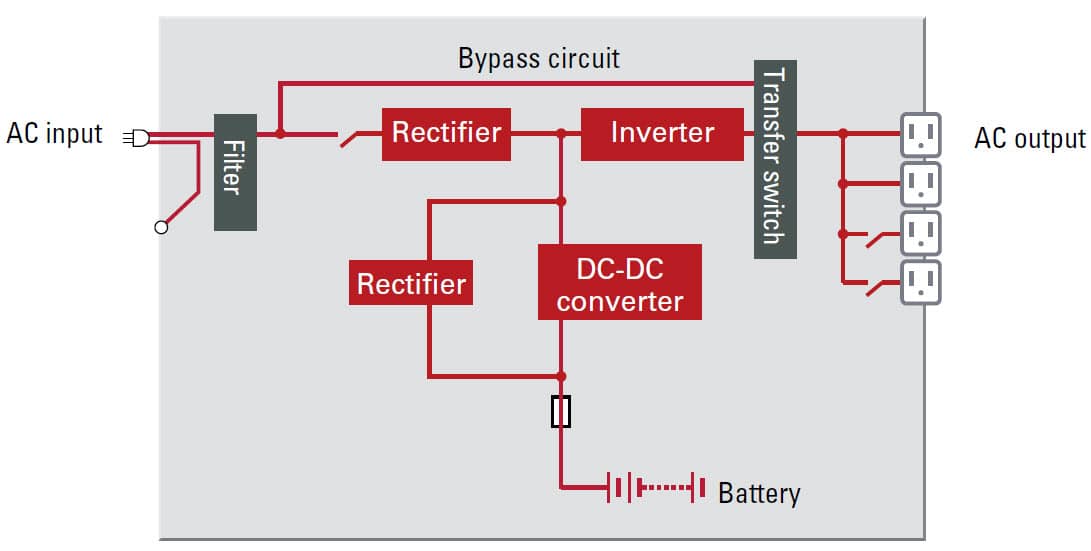7 Essential Components of a UPS System You Should Know About
Looking to understand the inner workings of an Uninterruptible Power Supply (UPS) system? You're in the right place. This article will break down the seven key components of a UPS system that ensure continuous power supply and protect your critical equipment. These components have been proven to be essential in maintaining the reliability and efficiency of a UPS system. Let's dive in.
Table of Contents
- Rectifier
- Battery
- Inverter
- Static Switch
- Manual Bypass Switch
- Control Unit
- Filters and Transformers
- Conclusion
1. Rectifier
The rectifier is the first major component of a UPS system. It converts the incoming AC power into DC power. This process is crucial as it charges the battery and powers the inverter. The rectifier utilizes diodes to convert the AC input into regulated DC output for smoothly and efficiently charging the batteries. Having a high-quality rectifier ensures your batteries are always optimally charged and ready to provide backup power when needed.
2. Battery
The battery is the heart of the UPS system. It stores the DC power from the rectifier and provides power when there is an interruption in the main power supply. The battery's capacity determines the duration of the backup power.
Therefore, choosing a battery with sufficient capacity for your requirements is vital. Sealed lead-acid and lithium-ion batteries are commonly used in UPS systems. The batteries must be regularly checked and maintained to maximize their lifespan and performance.
3. Inverter
The inverter is responsible for converting the DC power stored in the battery back into AC power. This AC power is then supplied to the connected equipment during a power outage. The inverter creates a smooth, high-quality sine wave output that is identical to the main utility input.
This enables the connected devices to function seamlessly during switchover to battery backup. Advanced inverters also regulate voltage and frequency for additional protection.
4. Static Switch
The static switch plays a critical role in maintaining uninterrupted power supply. It swiftly transfers the load to the bypass line in case of a UPS failure, ensuring continuous power supply.
It automatically switches connected devices from the utility input to the battery backup through the inverter without any delay or disruption. This prevents downtime, data loss, and damage to sensitive electronics.
5. Manual Bypass Switch
The manual bypass switch allows for maintenance or repair of the UPS without disrupting the power supply to the connected equipment. It's an essential component for maintaining the reliability of your UPS system.
The manual bypass directs the power supply to bypass the UPS and directly power the equipment. This allows service technicians to safely service the UPS when required.
6. Control Unit
The control unit is the brain of the UPS system. It monitors and controls all the other components, ensuring they work together seamlessly to provide uninterrupted power. It continuously tracks UPS operation, battery levels, load levels, and input/output conditions.
If any parameters go out of spec, the control unit can raise alarms, adjust operations, and safely shut down the UPS if needed.
7. Filters and Transformers
Filters and transformers are used to clean and condition the power supply. They help in reducing noise and voltage spikes, ensuring the power supplied to your equipment is stable and safe. Input electromagnetic interference filters remove electrical noise that could impact equipment performance.
Output transformers isolate equipment from surges or harmonics and regulate the output voltage. This conditioned power enhances the lifespan of connected devices.
Conclusion
Understanding the components of a UPS system is crucial in maintaining and optimizing its performance. Remember, each component plays a vital role in ensuring a continuous and stable power supply. Keep these components in check, and your UPS system will serve you well.

